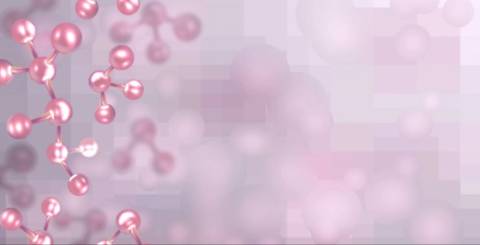What Is the Difference Between NAD and NADH?

In the complex web of cellular metabolism, certain molecules stand out for their critical roles in energy production and transfer. Among these, NAD (Nicotinamide adenine dinucleotide) and NADH are two such molecules that, despite their similar names, play distinctly different roles within our cells. Understanding the difference between NAD and NADH is pivotal in comprehending the larger picture of how cells generate and utilize energy. Let's dive into the intricate relationship between these two vital coenzymes.
The Basics: What are NAD and NADH?
NAD and NADH, at their core, are related but distinct molecules. NAD stands for Nicotinamide adenine dinucleotide, and it exists in two forms: NAD+ (oxidized form) and NADH (reduced form). To put it simply, the primary difference between NAD and NADH is an additional hydrogen atom and an extra pair of electrons in the latter. This seemingly small difference has profound implications for how energy is produced and transferred in cells.
Chemical Structure and Properties
The chemical structure of these molecules revolves around two nucleotide units, each comprising a phosphate group, a ribose sugar, and a base. In NAD, the base is nicotinamide. The fundamental distinction in the structures of NAD and NADH is the addition of two electrons and a proton (from the hydrogen atom) to the nicotinamide portion of NAD, resulting in NADH.
This property allows NADH to act as an electron carrier. In metabolic processes, NAD+ accepts electrons, becoming NADH, which can then donate these electrons to other pathways. This cycle of electron acceptance and donation is central to many metabolic reactions, especially those involving energy production.
Role in Cellular Metabolism
NAD+ and NADH are integral to cellular respiration, a series of metabolic processes that occur in cells to produce energy. During glycolysis and the Krebs cycle, glucose and other substrates are broken down, leading to the production of ATP, the primary energy currency of the cell.
During these reactions, NAD+ acts as an oxidizing agent, accepting electrons and becoming reduced to form NADH. This stored potential energy in NADH is then used in the electron transport chain, where NADH donates its electrons, powering the synthesis of ATP and regenerating NAD+ in the process. Without the ability of NAD+ to be reduced to NADH and vice versa, the efficient generation of ATP would not be possible.
Implications in Health and Disease
The balance between NAD and NADH is essential for maintaining cellular health. A disruption in this balance can lead to a range of health complications. For instance, an imbalance can result in mitochondrial dysfunction, which has been linked to a variety of diseases, including neurodegenerative conditions, cardiovascular diseases, and even the aging process itself.
Recent research has also explored the potential benefits of NAD+ supplementation, especially in contexts where cellular NAD+ levels decline, such as aging or certain diseases. While the precise benefits and mechanisms are still under investigation, it's clear that maintaining a balance between NAD and NADH is crucial for cellular health and overall well-being.
Conclusion: The Symbiotic Dance of NAD and NADH
NAD and NADH, two closely related yet distinct molecules, offer a fascinating glimpse into the intricate processes of cellular metabolism and the delicate dance of biochemical reactions. Their cyclical interaction—where NAD+ gets reduced to form NADH, and then in turn, NADH donates its electrons to regenerate NAD+—is not only a testament to nature's efficiency but also foundational to energy production in cells. Beyond this fundamental role, the balance between these two molecules, their ratios, and their interplay, has profound implications for health, disease progression, and the broader study of cellular biology. As scientific exploration progresses and we delve deeper into the cellular realm, the intertwined relationship between NAD and NADH promises to be a cornerstone, consistently shedding light on our ever-evolving understanding.
Similar Articles
Discover how longevity clinics use key biomarkers to assess ageing, improve health, and guide personalized wellness strategies for a longer, healthier life.
Halitosis, sometimes known as foul breath, affects millions of individuals worldwide and can cause humiliation, influencing everyday interactions and confidence.
In the modern world, maintaining good health often feels like a constant challenge. Between busy lifestyles, sedentary habits, and lack of motivation, many people find it difficult to stay consistent with exercise, diet, or wellness practices.
Learn how UV toothbrush sanitizers use UV-C light to kill 99.9% of bacteria, viruses, and fungi—backed by science for better oral health.
In the past, the experience of soaking in a hot tub or relaxing in a sauna was something reserved for spas, health clubs, or luxury retreats
Learn practical strategies for nurses to advance careers while maintaining patient care, managing time, and supporting well-being in today’s fast-paced healthcare.
Learn 6 key benefits of a juice cleanse, from boosting energy and hydration to clearer skin, easier digestion, and healthier eating habits.
Discover 5 simple ways to enjoy green tea daily for better taste, more nutrients, and lasting wellness benefits for your body and mind.
Discover how house slippers support foot health indoors—combining warmth, protection, and support—with insights from podiatrists and real‑world studies.









